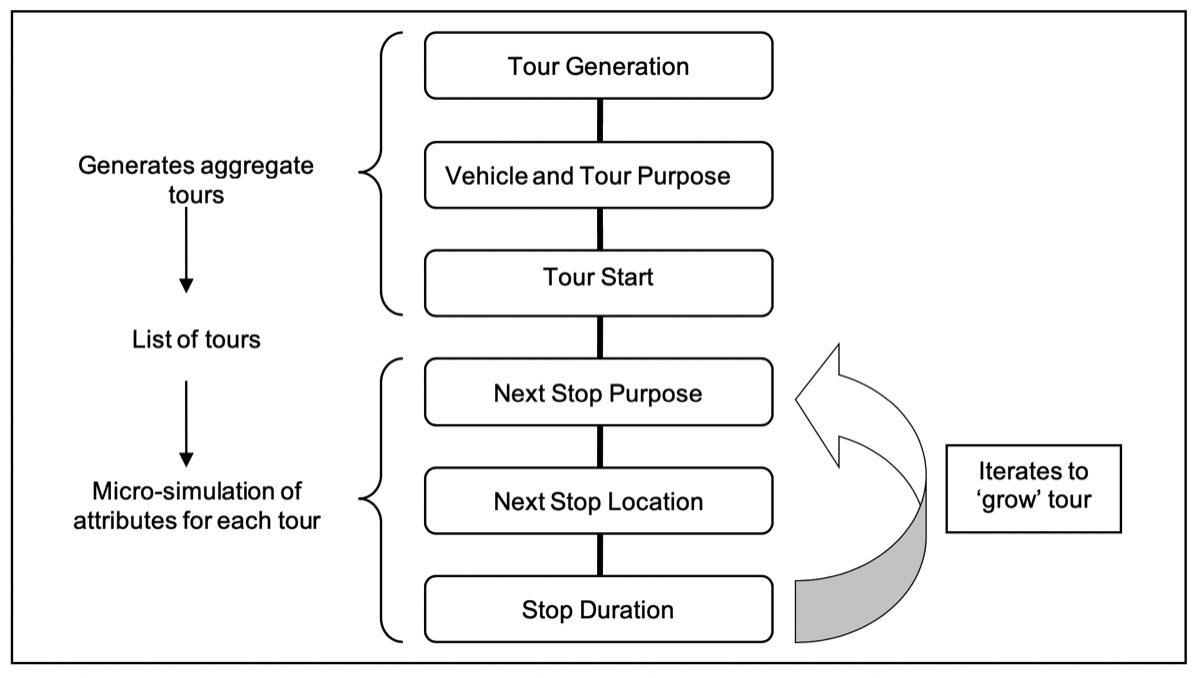Short Distance Commercial Vehicle Model (SDCVM)
The SDCVM model was originally developed in 2007-2008 using data from 2001-2002 Commodity Flow Surveys of over 4,300 business establishments in the Edmonton region, conducted to determine the characteristics of goods and service movements over a 24-hours period, and calibrated to match observed flows.
The model is a state-of-the-art micro-simulation tour-based model that explicitly predicts both goods and service vehicle movements in a local context. It includes light, medium and heavy commercial vehicle movements. The tour-based SDCVM is a group of models that work in series. A basic schematic of the models is shown below,

All sectors of the economy are considered including industrial, wholesale, retail, service, transport and handling and “fleet allocator” (businesses where vehicles operate on regular, and thus relatively fixed, routes rather than making stops in response to individual requirements e.g. parcel delivery / pick-up).
Tour generation quantities by vehicle type, tour purpose, and time of day are generated for each TAZ, using logit and regression equations applied with aggregate TAZ inputs and travel accessibilities, to create a list of tours.
Individual tours generated from each TAZ are then assigned a next stop purpose, next stop location and next stop duration using a micro-simulation process. In this process, Monte Carlo techniques are used to incrementally ‘grow’ a tour by having a ‘return-to-establishment’ alternative within the next stop purpose allocation. If the next stop purpose is not ‘return-to-establishment’, then the tour extends by one more stop. The location and duration of the next stop are then estimated. These steps are repeated until the “return to establishment” next stop purpose is chosen.
